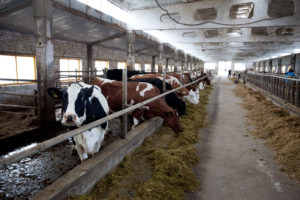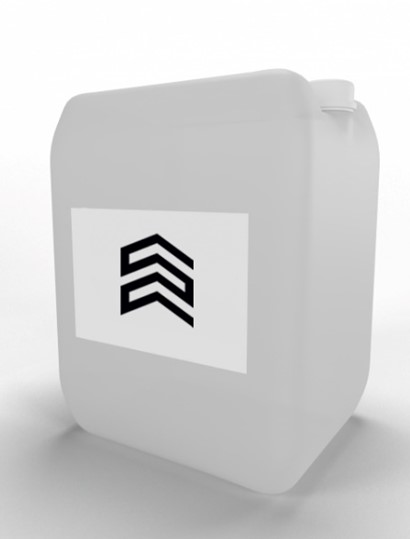New video on our channel: Shubat beats orange juice: These are the facts! The future of animal husbandry: probiotics from kumiss and shubat.

PIONERPRODUKT.by continues to explore Kazakhstan's agriculture . This time, we're at the Antigen enterprise in the Almaty region, Karasai district, Abay village.
Antigen Research and Production Enterprise LLP is a Kazakhstani research and production company operating at the intersection of biotechnology, veterinary science, and medicine. We specialize in creating high-quality immunobiological products and diagnostic test systems that meet the strictest international GMP, GLP, and GDP standards. The company's products are developed with the unique epidemiological conditions of the region in mind and are successfully used both in Kazakhstan and abroad.
it is at this facility that we will study camel MILK and MEAT obtained from the Alakol-Agro LLC farm in the Alakol district of Zhetysu region.
We visited a unique biotechnology laboratory where research is being conducted that could change the approach to food fermentation and livestock farming in Kazakhstan. Scientists here are isolating and cultivating probiotic microorganisms—lactic acid bacteria.Bacteria and yeasts obtained from traditional fermented milk products such as shubat and kumiss are used. They not only preserve valuable local strains but also study their properties, including resistance to pathogens and antibiotics, their impact on animal HEALTH , and even the taste of future products.
We continue our dive into the world of laboratory research, and our next stop is analyzing shubat brought from the Alakol-Agro farm. This time, we were monitoring the ascorbic acid content, or, more simply, vitamin C. As we were told, oneA glass of shubat (a fermented milk product made from camel milk) can replace up to ten glasses of orange juice in terms of vitamin C content. In shubat, a fermented milk product made from camel milk, its content can reach an impressive 400 mg/L. We observed the complex process step by step, according to GOST standards: from vitamin extraction with metaphosphoric acid, pH stabilization, filtration through a membrane filter, to the final analysis on a liquid chromatograph. And finally, the coveted peak appeared on the device's screen: the preliminary result was approximately 600 mg/L. This is more than twice the vitamin C content of a lemon. Science is not only interesting, but also useful.
We were then able to confirm that shubat also contains vitamin D, with a content of approximately 0.094 μg/ml, almost three times higher than that of cow's milk . Yes, the analysis is preliminary, and the instruments require fine-tuning, but even this data already speaks to the product's high nutritional value—and these aren't just words; I saw it with my own eyes.
We visited another laboratory where we discussed how specialists use modern methods, such as enzyme-linked immunosorbent assay and PCR, to test bird biomaterial for infections. Here, they determine maternal antibody levels in day-old chicks to understand the effectiveness of vaccination of the parent flock and when the first vaccination is necessary. Furthermore, the laboratory helps differentiate between recovered and vaccinated birds, as well as establish a preliminary diagnosis during disease outbreaks, such as Newcastle disease.
During our visit to a modern microbiology laboratory, we witnessed a complex and high-tech food safety process. We were led through a complex system of airlocks and sterile areas, from the reception of potentially contaminated dairy and meat samples to their multi-stage testing in laminar flow cabinets equipped with powerful air filtration systems. We were particularly impressed by the strict protocol, including sample cultivation in thermostats, microscopy, multiple tests, and subsequent sterilization of used materials in autoclaves before their disposal by specialized services.
Read together with it:
- An HSE expert reported on the "evolution of inequality" in access to healthcare.An HSE researcher analyzed Russians' access to healthcare over a ten-year period. In 2021, the influence of financial factors became noticeable for the first time: low income reduces the likelihood of visiting a DOCTOR.Over the ten years from 2011 to 2021, the number of Russians requiring medical care but not receiving it remained virtually unchanged, according to a study by Lyudmila Zasimova, hea...
- He crawled to the icon with prayer. The true story of a man who overcame drug addiction.Alexander Ovchinnikov. Topic News. Our project's hero was a drug addict for many years. The thought that this was a dead end never left him, but his addiction proved stronger. One day, when he could no longer walk, he crawled to an icon in prayer. This became his first step toward a new life. Today, he heads a charity center that helps those who have given up hope and are unable to quit ALCOHOL an...
- Низкое предложение и устойчивый спрос: в Аргентине растут цены на мясоЦены на говядину снова выросли, что отразилось на полках супермаркетов и в мясных магазинах. За последние две недели розничные цены выросли на 8–12%, а на некоторые популярные отрубы рост превысил 15% по сравнению с октябрем. Тем не менее, продажи остаются высокими: потребители продолжают покупать, принимая новые цены и закрепляя тенденцию, которая повторяется каждый год в конце года, когда спрос ...
- В Тульской области уничтожили 24 кг санкционных сыров и мясных продуктов из ЕвропыВо время совместной проверки с транспортной прокуратурой из оборота было изъято 24,45 кг сыров и мясных изделий, произведенных в таких странах, как Дания, Испания, Норвегия, Италия, Ирландия и Франция. Ввоз данной продукции на территорию России запрещен в соответствии с указом Президента, касающимся специальных экономических мер. Изъятая продукция была ликвидирована путем измельчения и денатурации...
- Смоленская область — лидер России по производству крольчатиныВ интервью «Агроэксперту» заместитель председателя регионального правительства Алексей Кучумов отметил, что регион достиг самодостаточности по таким продуктам, как яйца, мясо и картофель, превышая уровень 100%. Кроме того, Смоленская область занимает первое место по посевным площадям льна, а также активно развивает молочное животноводство, с общим поголовьем более 1......
- Rosselkhoznadzor has banned meat imports from two Belarusian enterprises due to violations.In addition, three other Belarusian producers are now subject to strict laboratory monitoring due to initial deviations: azithromycin was found in poultry MEAT from Druzhba Poultry Farm, and the pesticide imidacloprid was found in honey from Pchalyar Polachchyny Farm. Powdered MILK from Luninetsky Dairy Plant was also found to containcoli bacteria . These measures were taken at the request of the ...




























































